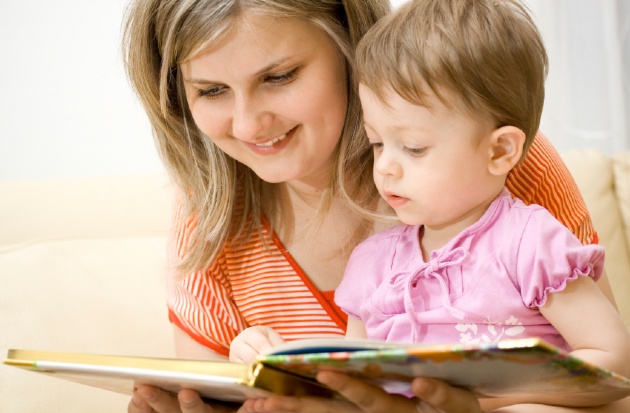"Read to
your child" is a phrase often told to parents, but many of us don't have
as much time as we'd like to do it. Parents often ask many questions about
reading to their children, such as; How beneficial can reading to my child be?
Can I develop my child's reading skills if I'm not a frequent reader? I'm the
one reading the words, what does my child get out of reading? What books are
appropriate for young children? How do I go about setting up a reading session?
Here are some answers to these very important questions.
Benefits
Reading to
your child can be beneficial in more ways than one. Perhaps the most important
benefit is the time you will spend together. You'll share a special moment by
taking part in an activity that can be done almost any time and any place.
Sitting on your lap, your child will have a sense of security. You'll get to
know each other and deepen your relationship.
Reading can
be compared to art; the more you draw, the better an artist you'll become.
Likewise, the more you read, the better a reader you'll be. Your child will not
criticize your reading skills. Even if you have a rocky start, with time, your
reading skills will get better.
By reading
the story aloud, your child will learn to follow a story from beginning to end.
New vocabulary will be introduced. When there's more than one language spoken
in the household, the child will develop his hearing to the language and be
able to use the correct pronunciation. There's also picture identification and
labeling various items in the book.
When the
child follows the story line, letter recognition develops. Try adding an extra
word in the story -- your child will tell you know that he's heard the difference.
You'll also be enhancing your child's love of words. A child that is read to,
will grow up to be a reader. Reading is one of life's essential skills. Could
you go a day without reading? Later on in your reading sessions, your child
will associate the picture with the word and those pre-reading skills are
golden.
What to Read
Books,
picture books and even homemade picture stories are inexpensive and are
available from the supermarket, drugstore and even the dollar store. Borrowing
books from the local library is a frugal way to read to your child and their
supply is always renewing. Grandparents, aunts and other family members are
often at a loss when it comes to birthdays and other gift-giving holidays.
Suggest an age-appropriate book club or magazine subscription. There are many
sites on the Internet available with children's stories.
If you can't
find a book to read, try your newspaper. You could read the comics together,
the sports or lifestyle section. Don't be surprised when a child gets attached
to one particular book. Be prepared to read that book over and over again.
The
Atmosphere
When setting
up a reading session, you'll need a cozy corner with good lighting and a
comfortable chair or couch for both of you. Use a blanket to cuddle under and
don't forget your book.
Set aside a
special time to read to your child. Young children younger than 6 year-old will
be content with a 10- to 15-minute reading session. Give it a try! You may find
it's as much fun for you as it is for your child.
Side
Bar
Key
Ingredients For Successful Reading;
- Find something interesting to read.
- Change your tone of voice, use low and high pitch, use squeaking sounds, whistles and other mouth noises.
- Involve your child in the reading.
- Discuss with your child the people in the story and what happened.
- Play with the ending, e.g. what happened to …? What if…?
- Most important -- laugh and have fun with your child.

 In The Latest Issue:
In The Latest Issue:


 BY:
BY: 

Tweet
Share